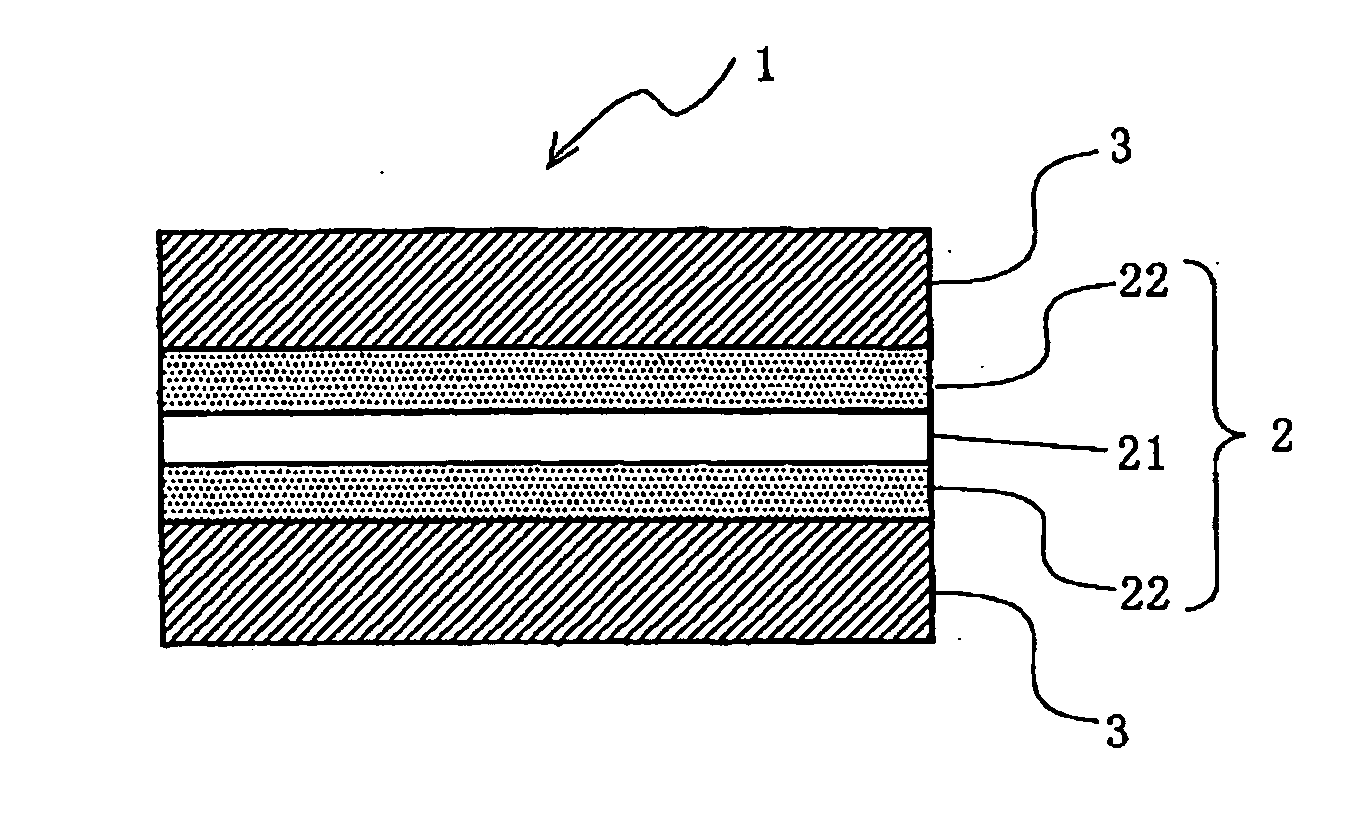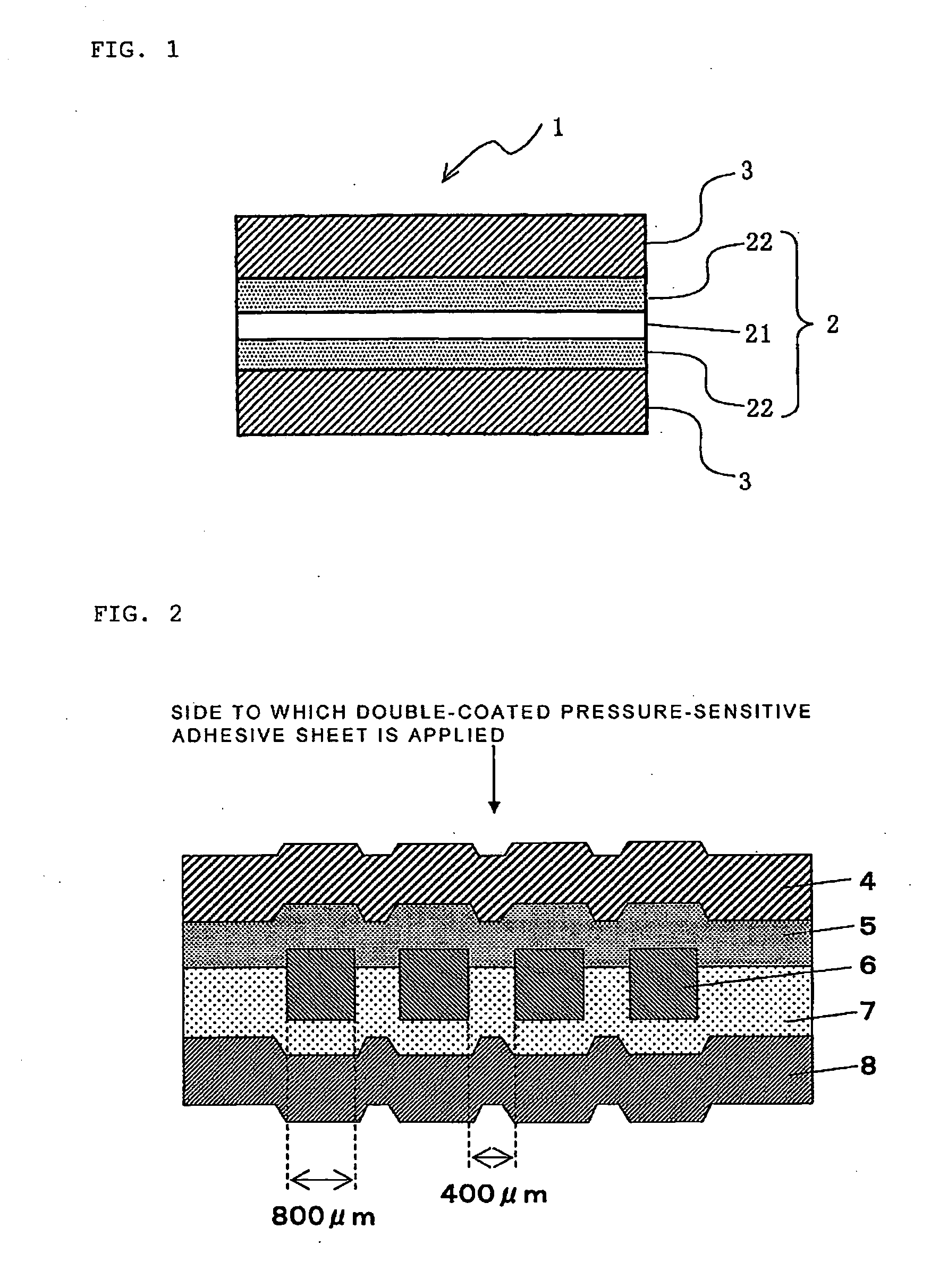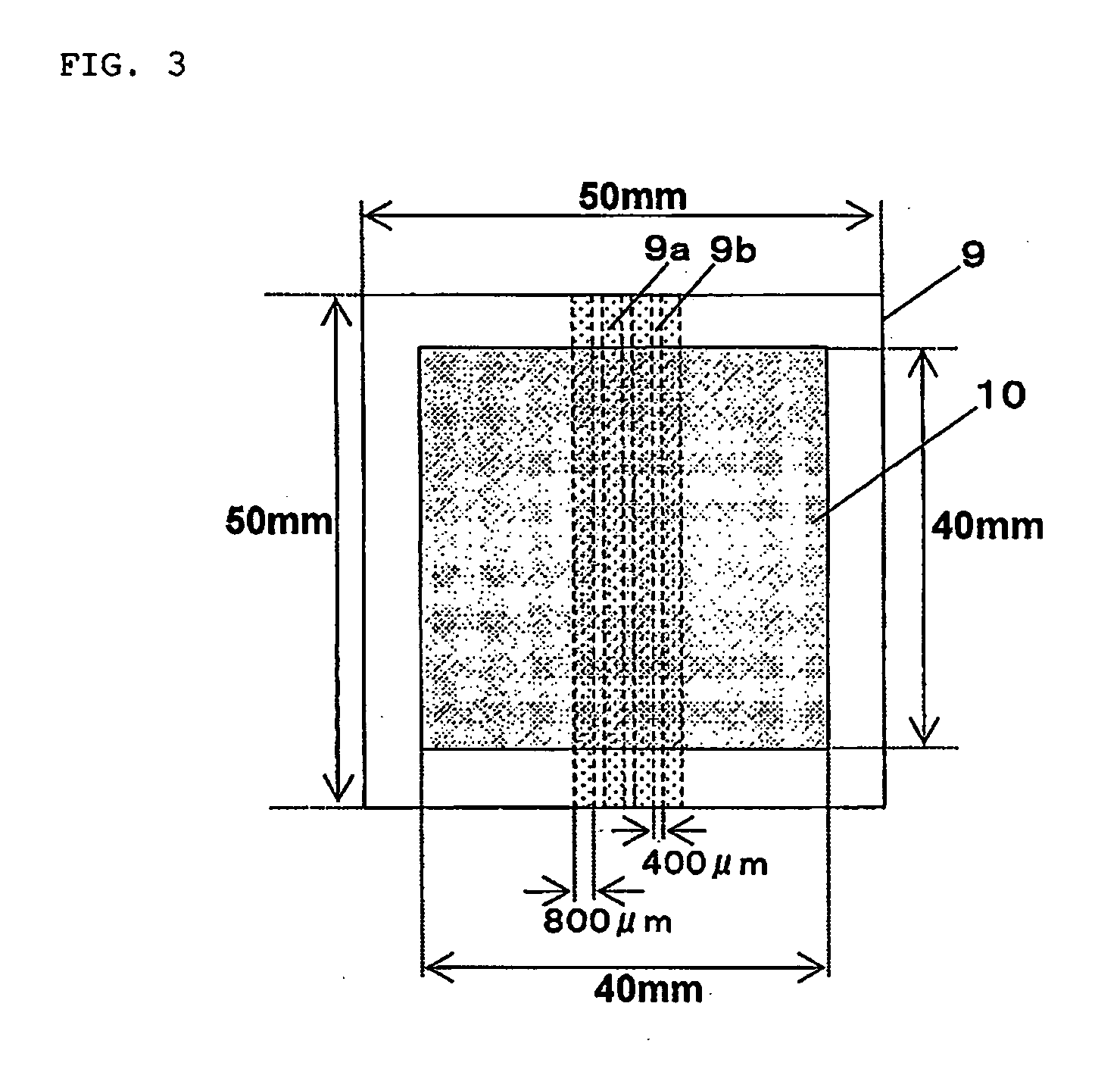Double-coated pressure sensitive adhesive sheet for fixing flexible printed circuit board
a technology of flexible printed circuit board and adhesive sheet, which is applied in the direction of laminating printed circuit board, cellulosic plastic layered products, instruments, etc., can solve the problems of insufficient processability insufficient adhesion and insufficient adhesiveness of double-coated pressure-sensitive adhesive sheet. , to achieve the effect of insufficient adhesiveness
- Summary
- Abstract
- Description
- Claims
- Application Information
AI Technical Summary
Benefits of technology
Problems solved by technology
Method used
Image
Examples
example 1
[0084]A solution (solids concentration: 25 percent by weight) of an acrylic polymer (hereinafter referred to as “Acrylic Polymer 1”) having a weight-average molecular weight of 150×104 was prepared by subjecting 93 parts by weight of butyl acrylate, 7 parts by weight of acrylic acid, and 0.05 part by weight of 4-hydroxybutyl acrylate to solution polymerization according to a common procedure while using ethyl acetate as a solvent and 0.1 part by weight of azobisisobutyronitrile as an initiator. The solution was combined with 0.4 part by weight (in terms of solids content) of an isocyanate crosslinking agent per 100 parts by weight of the acrylic polymer and thereby yielded a pressure-sensitive adhesive solution (acrylic pressure-sensitive adhesive solution). The isocyanate crosslinking agent was a product supplied by Nippon Polyurethane Industry Co., Ltd. under the trade name “CORONATE L” as a tolylene diisocyanate adduct of trimethylolpropane and had a solids concentration of 75 pe...
example 2
[0090]A double-coated pressure-sensitive adhesive sheet was prepared by the procedure of Example 1, except for using the isocyanate crosslinking agent in the amount given in Table 1 and further using a multifunctional epoxy crosslinking agent (supplied by Mitsubishi Gas Chemical Company, Inc. under the trade name “TETRAD C”) as an additional crosslinking agent in the pressure-sensitive adhesive solution.
[0091]In Table 1, the “amount (part by weight)” of the isocyanate crosslinking agent (CORONATE L) is indicated as the “amount (part by weight) in terms of solids content of CORONATE L per 100 parts by weight of the acrylic polymer”; and the “amount (part by weight)” of the epoxy crosslinking agents (TETRAD C) is indicated as the “amount (part by weight) of TETRAD C itself (the whole quantity of the product) per 100 parts by weight of the acrylic polymer”.
PUM
| Property | Measurement | Unit |
|---|---|---|
| thickness | aaaaa | aaaaa |
| thickness | aaaaa | aaaaa |
| thick | aaaaa | aaaaa |
Abstract
Description
Claims
Application Information
 Login to View More
Login to View More - R&D
- Intellectual Property
- Life Sciences
- Materials
- Tech Scout
- Unparalleled Data Quality
- Higher Quality Content
- 60% Fewer Hallucinations
Browse by: Latest US Patents, China's latest patents, Technical Efficacy Thesaurus, Application Domain, Technology Topic, Popular Technical Reports.
© 2025 PatSnap. All rights reserved.Legal|Privacy policy|Modern Slavery Act Transparency Statement|Sitemap|About US| Contact US: help@patsnap.com



